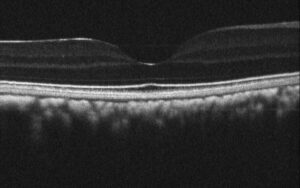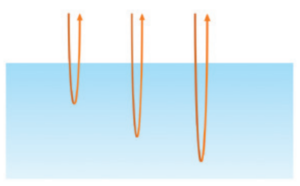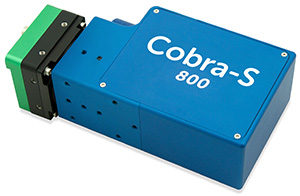 Optical coherence tomography is a form of non-invasive imaging that uses light waves to take cross-section images of biological material. It is most commonly used in eye care, with ophthalmologists using OCT to identify the distinctive layers present in a retina. This means that the ophthalmologist can measure and map the thicknesses of each layer, helping with the diagnosis of eye disease. In addition to ophthalmology, OCT is also used in research, guided surgery, industrial processing, and medical diagnostics.
Optical coherence tomography is a form of non-invasive imaging that uses light waves to take cross-section images of biological material. It is most commonly used in eye care, with ophthalmologists using OCT to identify the distinctive layers present in a retina. This means that the ophthalmologist can measure and map the thicknesses of each layer, helping with the diagnosis of eye disease. In addition to ophthalmology, OCT is also used in research, guided surgery, industrial processing, and medical diagnostics.
How Does OCT Work?
 Optical coherence tomography is based on low-coherence interferometry, using near-infrared light. It uses long wavelength light, allowing it to penetrate deeply into the scattering medium or tissue. The light waves travel to the different areas in the biological material and reflect off, forming a reconstructed profile.
Optical coherence tomography is based on low-coherence interferometry, using near-infrared light. It uses long wavelength light, allowing it to penetrate deeply into the scattering medium or tissue. The light waves travel to the different areas in the biological material and reflect off, forming a reconstructed profile.
There are two key approaches to optical coherence tomography. SS-OCT uses a swept wavelength and a singular element detector. SD-OCT employs a broadband source with a spectrometer for detection.
When it comes to spectrometers, the requirements for OCT applications are different from that of standard spectrometers. Optical coherence tomography spectrometers need to work at extremely high speeds to allow 2D and 3D image generation in a reasonable timescale, and must have high efficiency at all wavelengths in order to maximize contrast in the resulting images.
When light is reflected from an OCT sample it may have different polarization modes and as such there must be minimal dependence on polarization. This can be difficult when using standard spectrometers as the reflective gratings commonly used in their design tend to favor one polarization over the other.
Optical Coherence Tomography Products from Wasatch Photonics
Wasatch Photonics produces a range of innovative products that work to enhance optical coherence tomography at the component and module level.
OCT Gratings
 Patented gratings from Wasatch Photonics are market-leading, offering the highest possible diffraction efficiency with low scatter for all polarizations. This performance is maintained even at the extremes of a 100-200 nm operating wavelength range, leading to lower roll-off and rapid scan rates.
Patented gratings from Wasatch Photonics are market-leading, offering the highest possible diffraction efficiency with low scatter for all polarizations. This performance is maintained even at the extremes of a 100-200 nm operating wavelength range, leading to lower roll-off and rapid scan rates.
Volume phase holographic (VPH) transmission gratings have many advantages over reflective ruled gratings. They offer enhanced optical performance, high levels of robustness and consistency, and considerable design flexibility. Wasatch Photonics is the #1 supplier of gratings for OCT worldwide, in research and diagnostics.
OCT Spectrometers
 For clear, high resolution optical coherence tomography, a high performance, application-matched spectrometer is required. We combine our own high-efficiency VPH gratings with diffraction limited optics and high-sensitivity cameras in a robust, compact design that offers considerably better performance than one built with off-the-shelf optics.
For clear, high resolution optical coherence tomography, a high performance, application-matched spectrometer is required. We combine our own high-efficiency VPH gratings with diffraction limited optics and high-sensitivity cameras in a robust, compact design that offers considerably better performance than one built with off-the-shelf optics.
Wasatch Photonics offers more than 30 OCT spectrometer models at various center wavelengths and bandwidths, at visible wavelengths through 1700 nm. With high sensitivity, low roll-off, and acquisition speeds up to 250 kHz, we can provide quality spectrometers for many applications spanning research and diagnostics.
Contact us today to find out more about our optical coherence tomography products, or to discuss your custom design.


